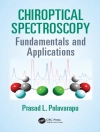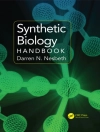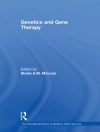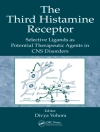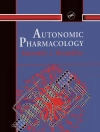This book covers recent advances in neural technology that provide for enhancements for brain function. It addresses a broad range of neural phenomena occurring in the brain circuits involved in perception, cognition, emotion and action, that represent the building blocks of behavior and cognition. Augmentation of brain function can be achieved by using brain implants for recordings, stimulation, or drug delivery. Alternative methods include employing brain-machine interfaces, as well as noninvasive activation of certain brain areas. This volume evaluates existing methods of brain augmentation while discussing the brain circuitry and neuronal mechanisms that make augmentation possible.
This volume offers novel insights into brain disorders, and explores new devices for brain repair while also addressing the philosophical and ethical implications of brain augmentation. The information in this book is relevant to researchers in the fields of neuroscience, engineering, and clinical practice.
Advance Praise for Modern Approaches to Augmentation of Brain Function :
“This impressive book by leading experts in neuroscience and neuroengineering lays out the future of brain augmentation, in which the human mind and machine merge, leading to a rapid exponential growth of the power of humanity.”
Ray Kurzweil , best-selling author, inventor, entrepreneur and a recipient of the National Medal of Technology and Innovation (1999), and the Lemelson-MIT Prize (2001)
‘This book employs a holistic approach in covering the recent advances in the fields of neuroscience, neuroinformatics, neurotechnology and neuro-psycho-pharmacology. Each chapter of the book covers major aspects of modern brain research in connection with the human mind and behavior, and is authored by researchers with unique expertise in their field. ‘
Ioan Dumitrache , Prof. Dr. Eng. Faculty of Computer Science, Polytechnic University of Bucharest, Bucharest, Romania
“This book presents compelling perspectives on what interactive neuroscience will look like in the future, delving into the innovatory ideas of a diverse set of neuroscientists, and speculating on the different ways computer chips implanted in the brains of humans can effect intelligence and communication.”
György Buzsáki , MD, Ph D is the Biggs Professor of Neuroscience, NYU School of Medicine, New York, NY
表中的内容
1. Using electrical stimulation to explore and augment the functions of parietal-frontal cortical networks in primates.- 2. Multi-system benefits of epidural stimulation following spinal cord injury. 3. Neurostimulator for hippocampal memory prosthesis.- 4. Modern approaches to augmenting the brain functions.- 5. Brain machine interfaces within a critical perspective.- 6. An implantable wireless device for ECo G and cortical stimulation.- 7. BCI Performance improvement by special low jitter quasi-steady State VEP paradigm.- 8. Communication with Brain-Computer Interfaces in Medical Decision-Making.- 9. Neuroprotection and neurocognitive augmentation by photobiomodulation.- 10. Avoiding partial sleep – the way for augmentation of brain function.- 11. Augmentation of brain functions by nanotechnology.- 12. The impact of ageing and age-related comorbidities on stroke outcome in animal models and humans.- 13. Diagnostic markers ofsub-clinical depression based on functional connectivity.- 14. Transcranial magnetic stimulation in autism spectrum disorders: modulating brainwave abnormalities and behaviors.- 15. Neurofeedback training with concurrent psychophysiological monitoring in children with autism spectrum disorder with comorbid attention deficit/hyperactivity disorder.- 16. Augmentation through interconnection: brain-nets and telemedicine.- 17. Cognitive augmentation via a brain/cloud interface.- 18. Augmentation of neuro-marketing by neural technology.- 19. Augmentation of nutrition by nanotechnology.- 20. Neural spintronics: noninvasive augmentation of brain functions.- 21. Does the power to suppress an action make us free?.- 22. Deep brain stimulation for Parkinson’s disease-future directions for enhancing motor function.- 23. Neuromodulation for gait.- 24. Augmentation and rehabilitation with active orthotic devices.- 25. Effects of r TMS on behavioral and electrocortical measures of error monitoring and correction function in children with autism spectrum disorder.- 26. Affective Virtual Reality Gaming for Autism.- 27. A machine learning approach to automatic phobia therapy with virtual reality.- 28. Vision augmentation by pharmacological enhancement of the visual experience.- 29. Cognitive enhancing substances and the developing brain: risks and benefits.- 30. Pharmacological approaches in the augmentation and recovery of brain function.
关于作者
Dr. Ioan Opris is an associate professor at University of Miami, Coral Gables in Biomedical Engineering Department, having a Ph D in Physics and Biophysics, with a substantial contribution in Systems and Cognitive Neuroscience. He is already an editor of two previous Springer books. The main focus of his current research is on the augmentation of cognitive function and locomotion boy both classic and modern noninvasive Neural Spintronics approaches. Dr. Opris is an editor of several journals, books and special issues.
Dr. Mikhail Lebedev a Chief Research Scientist and Professor, works in the fields of Neurorophysiology and Neuroprosthetics. The major focus of his current research is on brain-computer interfaces (BCIs), such as BCIs for reaching and grasping, BCIs that reproduce bipedal locomotion patterns, and sensorized BCIs that both extract motor command from the brain and deliver sensory information back to the brain. Lebedev is an editor of several journals, books and special issues.
Manuel F. Casanova, MD is the Smart State Endowed Chair in Childhood Neurotherapeutics and a professor of Biomedical Sciences at the University of South Carolina School of Medicine Greenville. He is a former Gottfried and Gisela Kolb Endowed Chair in Outpatient Psychiatry and a Professor of Anatomical Sciences and Neurobiology at the University of Louisville. Casanova’s research focuses on the biological basis of neurodevelopment disorders, and abnormalities of cortical circuitry, in particular on the cell minicolumn. Using computerized imaging analysis, he has established the anatomical validity of the cell minicolumn. Casanova has reported interhemispheric differences in the morphometry of minicolumns that could provide explanations for the speciation of hominids. He has also reported on the use of transcranial magnetic stimulation as a possible therapeutic intervention in autism and on the use of gamma oscillation abnormalities as an outcome measure.


